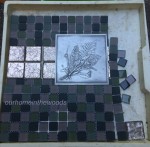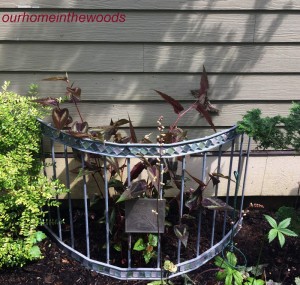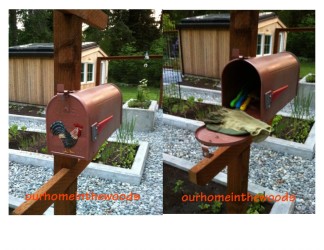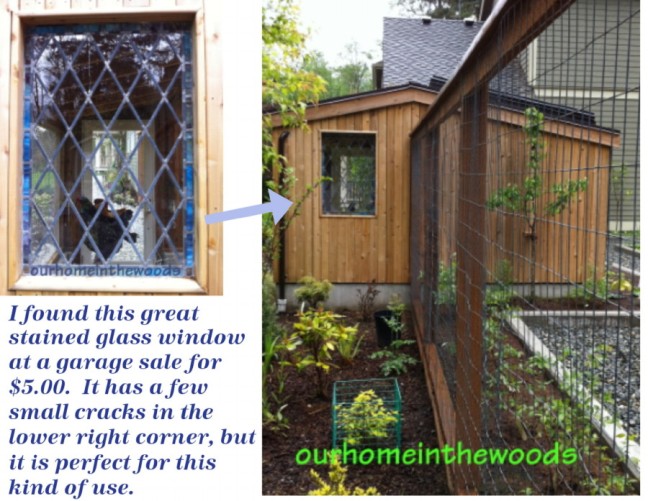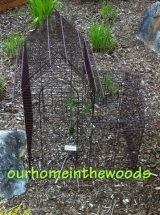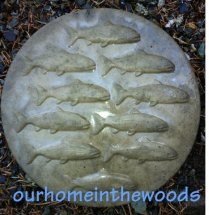Last summer we started planning and building a ‘real’ fruit and vegetable garden for the first time since we moved to this property in 2000. We have some ‘issues’ related to growing food (or anything) where we live. We are positioned at the bottom of the west side of a mountain. In the summer the sun comes up about 11:00 am, so it’s cooler and darker, and our gardens are several weeks behind the rest of the Snoqualmie valley. Lots of rain, frequent high winds and critters also pose some challenges! Between the slugs, snails, rabbits, the deer, the herd of elk and the bears, a good strong fence is necessary and as the trees start bearing fruit we will be adding electric fence. Bears have been known to be unsatisfied by just picking a few apples and heading back to the woods. They pull out the whole tree and make off with it.
 The heat pump, a tree (removed now) and crappy dirt.
The heat pump, a tree (removed now) and crappy dirt.

(above) Fenced in, ready to build the chicken ‘compound’ and future kitchen garden from the back of the house.

(above) Fenced in, ready to build the chicken ‘compound’ and future kitchen garden from the front of the house.
My husband (the over-builder) doesn’t build an ordinary wood raised bed garden. He wants to build it ‘right’, be done with it and move on to the next project. The spot in our yard with the best sun, is a low spot and has some drainage problems, it’s been pretty muddy. Solution: concrete raised beds, bringing in soil and rock paths. So he has been framing up each section, mixing the concrete in the wheel barrow and filling it with soil. I have been setting decorative tiles and other bits into every bed, making it into a giant ‘art project’. We want this garden will be easy care, functional, and efficient as well as beautiful, interesting, artistic and fun.

( The building is the chicken ‘compound’. This ‘coop’ is a story for another day. ;-). )
The concrete may create some problems this year as it cures. It is very alkaline, so we will try to keep organic matter into the soil to keep it neutral to slightly acidic.
We are really pleased with how it is turning out so far. We still need to frame up and pour two smaller sections and install an art piece that we bought when a local nursery went out of business. Then there is more soil to bring in, more rocks to move in then finally, planting the summer plants that we started from seeds in the house. In the fall there will be a cold frame to extend the growing season.
More to come……

